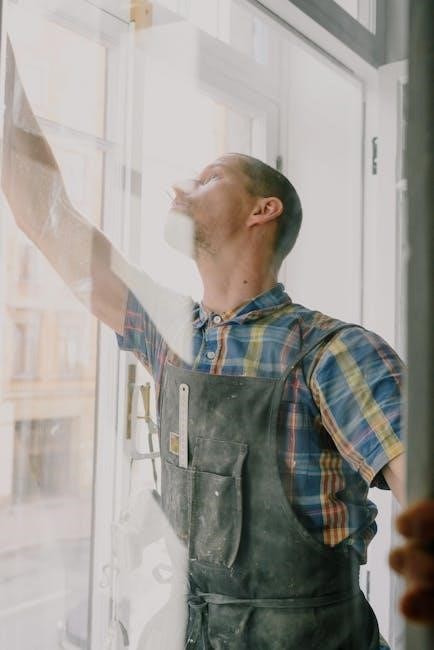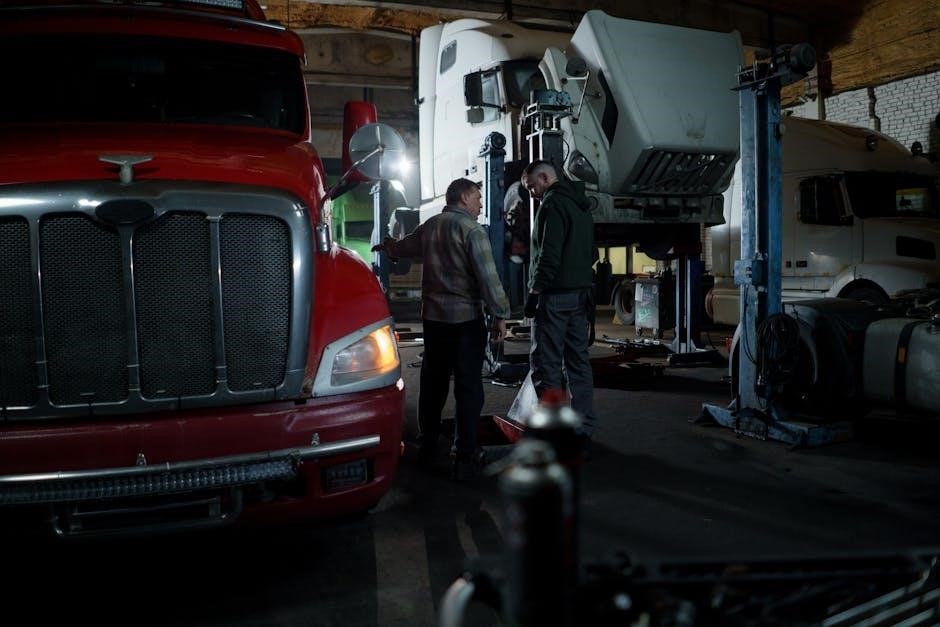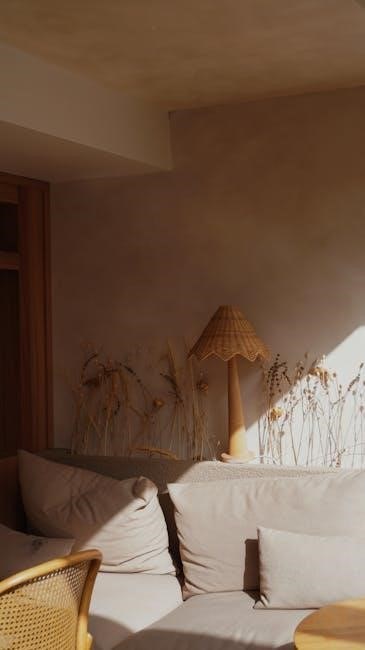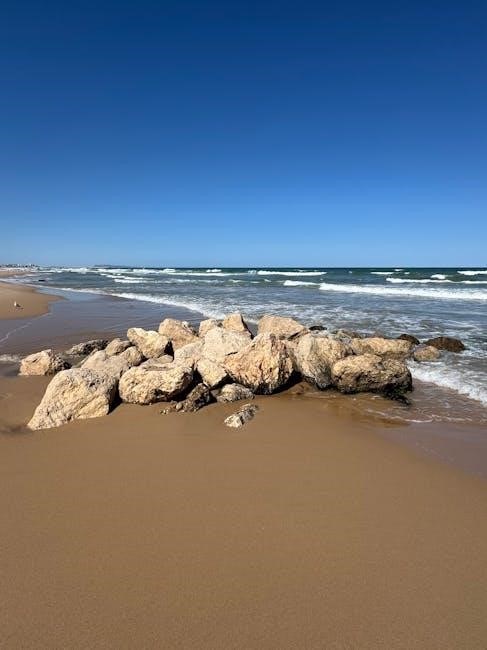ob/gyn coding cheat sheets pdf

OB/GYN Coding Cheat Sheets PDF: A Comprehensive Plan
OB/GYN coding cheat sheets, often in PDF format, offer quick reference to ICD-10-CM and CPT codes․ These guides streamline billing for pregnancy, delivery, and gynecological services, ensuring accurate coding and compliance․
OB/GYN coding is a specialized field demanding precision due to the complex nature of obstetric and gynecological services․ Accurate coding is crucial for appropriate reimbursement, compliance with regulations, and data analysis for healthcare trends․ Utilizing resources like OB/GYN coding cheat sheets in PDF format is essential for coders and billing staff․
These quick reference guides simplify the process of assigning correct ICD-10-CM diagnosis codes and CPT procedure codes․ They address a wide range of scenarios, from antepartum care and delivery to gynecological procedures like hysterectomies and laparoscopies․ Coding Companion and ACOG’s Coding Quick Reference Guides are popular examples․
The field requires constant updates due to evolving coding guidelines․ Cheat sheets help professionals stay current with these changes, minimizing errors and maximizing revenue cycle efficiency․ A comprehensive understanding of both diagnostic and procedural coding is paramount for successful OB/GYN practice management․ These resources provide an easy-to-understand step-by-step approach․
Understanding ICD-10-CM Codes in OB/GYN
ICD-10-CM coding within OB/GYN requires a detailed understanding of pregnancy-related conditions, labor, delivery, and postpartum care․ OB/GYN coding cheat sheets, often available as PDF downloads, are invaluable for navigating this complexity․ These guides provide a structured approach to selecting the most accurate diagnosis codes․
Specifically, these resources categorize codes for conditions like ectopic pregnancy and abnormal vaginal bleeding, ensuring specificity in billing․ They also delineate codes for various stages of pregnancy, labor complications, and postpartum complications․ The OB/GYN Diagnostic Coding Quick Reference Guide is a prime example․
Accurate ICD-10-CM coding is vital for medical necessity documentation and claim submissions․ Cheat sheets help coders avoid common errors and ensure compliance with payer requirements․ Staying updated with annual coding changes is crucial, and these quick reference tools facilitate that process, supporting efficient and accurate healthcare documentation․
CPT Coding for Obstetrical Services
CPT coding for obstetrical services encompasses antepartum care, vaginal deliveries, and Cesarean sections․ OB/GYN coding cheat sheets, frequently found in PDF format, are essential for accurate billing․ These guides offer a streamlined approach to selecting the correct procedure codes based on the services rendered․

For example, quick reference guides detail CPT codes like 59425 and 59426 for antepartum care, varying based on the number of visits (4-6 or 7+)․ Codes for postpartum care, such as 59430, are also clearly outlined․ A comprehensive guide will cover surgical codes for obstetric delivery and ob-gyn ultrasound․
These resources simplify the process of identifying appropriate CPT codes, reducing claim denials and maximizing reimbursement․ The ACOG’s Coding Quick Reference Guides are particularly valuable․ Utilizing these cheat sheets ensures adherence to coding guidelines and promotes efficient revenue cycle management within OB/GYN practices․

CPT Coding for Gynecological Services
CPT coding for gynecological services requires precision, and OB/GYN coding cheat sheets in PDF format are invaluable tools․ These guides provide a quick reference for procedures like hysterectomies and laparoscopies, ensuring accurate billing and minimizing claim rejections․ A Coding Companion specifically aids in navigating the complexities of this specialty․
Cheat sheets detail CPT codes for various gynecological procedures, including gynecologic embolization․ They often present a step-by-step clinical description to facilitate correct code selection․ Resources like ACOG’s Coding Quick Reference Guides offer up-to-date information on surgical codes․
These resources are crucial for staying current with coding regulations and guidelines․ A comprehensive guide will cover a wide range of procedures, enabling efficient and compliant billing practices․ Utilizing these PDF resources streamlines the coding process and supports optimal revenue cycle management in OB/GYN practices․
Key Components of an OB/GYN Coding Cheat Sheet

Effective OB/GYN coding cheat sheets, frequently available as PDF downloads, share several key components․ Primarily, they feature a concise listing of relevant ICD-10-CM and CPT codes, categorized for quick access․ These guides often include descriptions of common pregnancy conditions, labor & delivery scenarios, and gynecological procedures․
A valuable cheat sheet will also incorporate coding tips and reminders, highlighting potential pitfalls and ensuring compliance․ Many include details on billing guidelines and documentation requirements․ Digital downloads often offer zoom functionality for enhanced readability;
Furthermore, a comprehensive OB/GYN quick reference guide will be regularly updated to reflect the latest coding changes․ These resources are designed for easy understanding, providing a streamlined approach to accurate coding and efficient claim submission․ They are essential for both experienced coders and those new to the specialty․
ICD-10-CM Codes for Pregnancy-Related Conditions
OB/GYN coding cheat sheets, often in PDF format, dedicate significant space to ICD-10-CM codes for pregnancy-related conditions․ These include codes for ectopic pregnancy (O00․-), gestational diabetes (O24․4-), pre-eclampsia (O13․-), and hyperemesis gravidarum (O21․1)․ Accurate coding requires specificity, differentiating between mild, moderate, and severe forms of these conditions․
Cheat sheets will also list codes for complications like placenta previa (O46․-) and abruptio placentae (O45․-)․ Furthermore, they detail codes related to multiple gestations (O30․-) and maternal infections during pregnancy․ Proper documentation is crucial for selecting the most appropriate code․
These quick reference guides assist in accurate billing by ensuring the correct diagnosis code is linked to the services provided․ Staying updated with annual ICD-10-CM revisions, as highlighted in coding companions, is vital for compliance and maximizing reimbursement․
ICD-10-CM Codes for Labor and Delivery
OB/GYN coding cheat sheets in PDF format provide essential ICD-10-CM codes for labor and delivery․ These codes cover various scenarios, including spontaneous vaginal delivery (O60․-), induced labor (O60․0-), and operative vaginal delivery (O61․-) utilizing forceps or vacuum․

Cheat sheets detail codes for complications during labor, such as dystocia (O62․-), postpartum hemorrhage (O72․-), and fetal distress (O73․-)․ Specificity is key; codes differentiate between shoulder dystocia and breech presentation․ They also include codes for prolonged labor and obstructed labor․
Furthermore, these quick reference guides offer codes for multiple births during delivery (O30․0-)․ Accurate coding ensures appropriate billing and reflects the complexity of labor and delivery․ Resources like ACOG’s Coding Quick Reference Guides are invaluable for staying current with these frequently updated codes․
ICD-10-CM Codes for Postpartum Care
OB/GYN coding cheat sheets, often available as PDF downloads, are crucial for accurate billing during postpartum care․ These guides detail ICD-10-CM codes for the puerperium period (O84․-), encompassing the six weeks following delivery․
Cheat sheets categorize codes based on postpartum complications․ This includes postpartum hemorrhage (O72․-), postpartum infection (O85․-), and postpartum psychosis (O90․8-)․ They also specify codes for wound dehiscence (O75․-) and mastitis (N64․-) if related to breastfeeding post-delivery․
Quick reference guides highlight codes for routine postpartum check-ups (Z08) and encounters for breastfeeding support (Z36․89)․ Proper coding differentiates between normal postpartum recovery and complications requiring additional care․ Resources like the OB/GYN Diagnostic Coding Quick Reference Guide are essential for staying updated on these codes․
CPT Codes for Antepartum Care
OB/GYN coding cheat sheets, frequently found in PDF format, simplify the selection of appropriate CPT codes for antepartum care․ These guides detail codes for routine prenatal visits, varying based on the level of service and time involved․
Cheat sheets typically list 99212-99215 for office or other outpatient visits, reflecting the complexity of the patient’s condition and the physician’s work․ For extended antepartum visits, codes 59425 (4-6 visits) and 59426 (7 or more visits) are crucial, as highlighted in quick reference guides․
Resources like the Coding Companion for OB/GYN emphasize accurate coding based on documentation․ PDF cheat sheets also clarify codes for specialized antepartum care, such as those involving high-risk pregnancies or multiple gestations․ Proper application of these codes ensures appropriate reimbursement and compliance․
CPT Codes for Vaginal Delivery
OB/GYN coding cheat sheets, often available as PDF downloads, provide a concise overview of CPT codes for vaginal deliveries․ These guides are essential for accurate billing and reflect the complexity of the delivery process․

Core codes include 59510 (full term), 59511 (preterm), and 59512 (postterm) for the basic vaginal delivery․ Modifiers are critical; for example, modifier 22 indicates increased complexity due to patient condition․ Quick reference guides detail these modifiers and their appropriate use․
PDF cheat sheets also cover additional procedures frequently performed during vaginal delivery, such as episiotomy (59900) or repair of lacerations (59901-59904)․ Resources like ACOG’s Coding Quick Reference Guides emphasize proper documentation to support code selection․ Accurate coding ensures appropriate reimbursement and minimizes audit risk․
CPT Codes for Cesarean Section

OB/GYN coding cheat sheets, frequently found in PDF format, are invaluable for navigating the complexities of CPT codes related to Cesarean sections․ These guides streamline the billing process and ensure accurate coding for this major surgical procedure․

The primary code for a Cesarean delivery is 59920 (full term) and 59921 (preterm)․ Quick reference guides highlight the importance of selecting the correct code based on gestational age․ Modifier 22, indicating increased complexity, is often appended when significant patient risk factors are present․
PDF resources also detail codes for related procedures, such as tubal ligation performed during Cesarean section (58940-58945)․ ACOG’s Coding Quick Reference Guides emphasize the need for detailed operative reports to justify code selection․ Proper documentation and coding are crucial for maximizing reimbursement and avoiding compliance issues․
CPT Codes for Gynecological Procedures ─ Hysterectomy

OB/GYN coding cheat sheets, often available as PDF downloads, provide essential quick reference for accurately coding hysterectomies․ These guides are critical for proper billing and compliance within gynecological services․
Hysterectomy CPT codes vary significantly based on the approach (abdominal, vaginal, laparoscopic, robotic-assisted) and whether oophorectomy or salpingectomy is performed․ Codes range from 58150 (total hysterectomy, abdominal approach) to 58571 (laparoscopic supracervical hysterectomy)․
PDF resources emphasize the importance of specifying the surgical technique and any additional procedures․ Modifiers are frequently used to indicate unilateral or bilateral removal of ovaries or fallopian tubes․ ACOG’s Coding Quick Reference Guides highlight the need for detailed operative reports to support code selection․ Accurate coding ensures appropriate reimbursement and minimizes audit risk․
CPT Codes for Gynecological Procedures ─ Laparoscopy
OB/GYN coding cheat sheets, frequently found in PDF format, are invaluable for navigating the complexities of laparoscopic gynecological procedure coding․ These resources streamline the billing process and ensure adherence to current guidelines․
Laparoscopic CPT codes are highly specific, depending on the procedure performed – diagnostic, operative, or both․ Codes like 58541 (laparoscopy, diagnostic) and 58540 (laparoscopy, surgical approach to removal of adnexal structures) are common․ PDF cheat sheets often detail codes for procedures like ovarian cystectomy (58940) and tubal ligation (58530)․
ACOG’s Coding Quick Reference Guides emphasize the importance of documenting the primary procedure when multiple procedures are performed during a single laparoscopic encounter․ Modifiers are crucial for indicating unilateral or bilateral procedures․ These guides help coders select the most accurate code, maximizing reimbursement and minimizing potential audit issues․
CPT Codes for OB/GYN Ultrasound
OB/GYN coding cheat sheets, often available as PDF downloads, are essential for accurate billing of ultrasound services․ These resources provide a quick reference to the numerous CPT codes used in obstetrical and gynecological ultrasound․
Obstetrical ultrasound codes (76805-76816) vary based on gestational age and complexity – limited, comprehensive, or specialized scans․ Gynecological ultrasound codes (76830-76857) depend on whether the scan is transabdominal or transvaginal, and the structures evaluated․ PDF cheat sheets often delineate codes for follicle-stimulating hormone (FSH) monitoring (76831) and evaluation of the uterus and adnexa (76811)․
ACOG Coding Quick Reference Guides highlight the importance of documenting the indication for the ultrasound, as this can influence code selection․ Furthermore, these guides clarify appropriate use of modifiers to indicate multiple gestations or complex cases․ Utilizing these PDF resources ensures compliant coding and optimal reimbursement․
Coding for Ectopic Pregnancy
OB/GYN coding cheat sheets, frequently found in PDF format, are crucial for correctly coding ectopic pregnancies, a potentially life-threatening condition․ Accurate coding ensures appropriate billing and reflects the complexity of care․
ICD-10-CM codes for ectopic pregnancy begin with O00, specifying location (fallopian tube, ovarian, abdominal, etc․)․ PDF cheat sheets detail these specific codes and emphasize the importance of laterality․ CPT codes depend on the treatment – expectant management, medical management (methotrexate – 99213, 99214), or surgical intervention․
Surgical options, like salpingectomy (58541-58544) or salpingostomy (58545), require precise code selection based on approach (laparoscopic, open)․ Coding Companion for OB/GYN stresses documenting the method of diagnosis (ultrasound, serum hCG levels) and any complications․ ACOG’s quick reference guides aid in navigating these complexities, ensuring compliant and accurate coding practices․
Coding for Abnormal Vaginal Bleeding

OB/GYN coding cheat sheets, often available as PDF downloads, are essential for navigating the complexities of coding abnormal vaginal bleeding (AVB)․ Accurate coding reflects the diagnostic workup and treatment provided, impacting billing accuracy․
ICD-10-CM codes for AVB range from A26 (heavy menstrual bleeding) to A33 (toxic shock syndrome, potentially linked to tampon use)․ PDF resources highlight the importance of specifying the phase of the menstrual cycle and any associated symptoms․ Diagnostic procedures, like endometrial biopsies (58558-58559), require appropriate coding․
CPT codes for related procedures, such as dilation and curettage (D&C – 58150, 58160), or hysteroscopy (58561-58563), must align with the documented indication – in this case, AVB․ Coding Companion for OB/GYN emphasizes detailed documentation of the bleeding pattern and any underlying pathology․ ACOG’s quick reference guides provide a streamlined approach to selecting the correct codes․
Resources for OB/GYN Coding Cheat Sheets (PDF Format)
Numerous online resources offer OB/GYN coding cheat sheets in PDF format, aiding in accurate billing and compliance․ ACOG (American College of Obstetricians and Gynecologists) provides valuable Coding Quick Reference Guides, often downloadable, covering a spectrum of services․
Coding Companion for OB/GYN is a frequently cited resource, offering detailed guidance and step-by-step clinical descriptions․ Several medical coding companies also offer specialized OB/GYN cheat sheets, sometimes available for purchase or as part of a subscription service․ These PDFs typically include ICD-10-CM and CPT codes for common procedures․
Websites specializing in medical coding education often provide free sample cheat sheets․ A quick online search for “OB/GYN coding cheat sheet PDF” yields numerous results․ Remember to verify the source and ensure the information is current, as coding guidelines change frequently․ Utilizing these resources streamlines the coding process and minimizes errors․
Staying Updated with Coding Changes in OB/GYN
Maintaining current OB/GYN coding knowledge is crucial due to frequent updates to ICD-10-CM and CPT codes․ Relying solely on static OB/GYN coding cheat sheets PDFs is insufficient; continuous professional development is essential․
ACOG regularly publishes updates and provides coding alerts to its members․ Subscribing to coding newsletters from reputable sources, like Coding Companion, delivers timely information․ Participating in webinars and attending coding workshops ensures understanding of new guidelines․
Regularly reviewing the CMS (Centers for Medicare & Medicaid Services) website for updates is vital․ Many coding companies offer services to notify you of changes․ Updating your OB/GYN coding cheat sheets PDF library annually, or more frequently as needed, is a best practice․ Proactive adaptation to coding changes minimizes claim denials and maximizes accurate billing․















































































